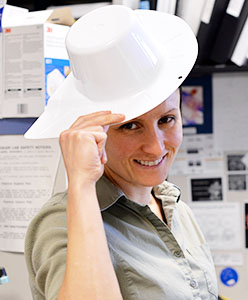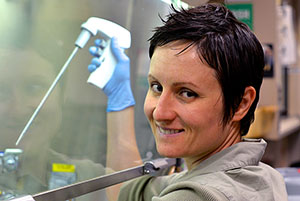Laboratory Research
Lab Research Projects
Mechanisms of Intestinal Fibrosis
This project, sponsored by the NIH, is designed to better understand why people with Crohn's develop intestinal scarring. We started with strictures from patients with Crohn's disease who had surgery, and found that the pieces of intestine that were removed were quite stiff. These samples had large amounts of collagen and extracellular matrix, that had extensive crosslinking making it more stiff.
We evaluated myofibroblast cells from human intestines and showed that they become more fibrogenic (scar-generating) when grown on a stiff matrix. The stiff matrix itself causes a change to a more fibrogenic state in these cells, suggesting that this could be a mechanism for propagating and increasing scar tissue once a stricture is started. We are evaluating the effects of the matrix structure on the formation of strictures in cell culture models and in rat and mouse models of intestinal scarring. We hope to develop ways to identify early scarring with ultrasound elastography, and test whether physical changes (balloon dilation), chemical reactions (breaking crosslinks or digesting collagen), or anti-fibrotic medications can slow the progress of fibrosis or even reverse intestinal scarring (fibrosis).
Laboratory Technicians
Laura Johnson

Eva Rodansky


Research Students
Kay Sauder
Katie Finley
Emily Briggs

